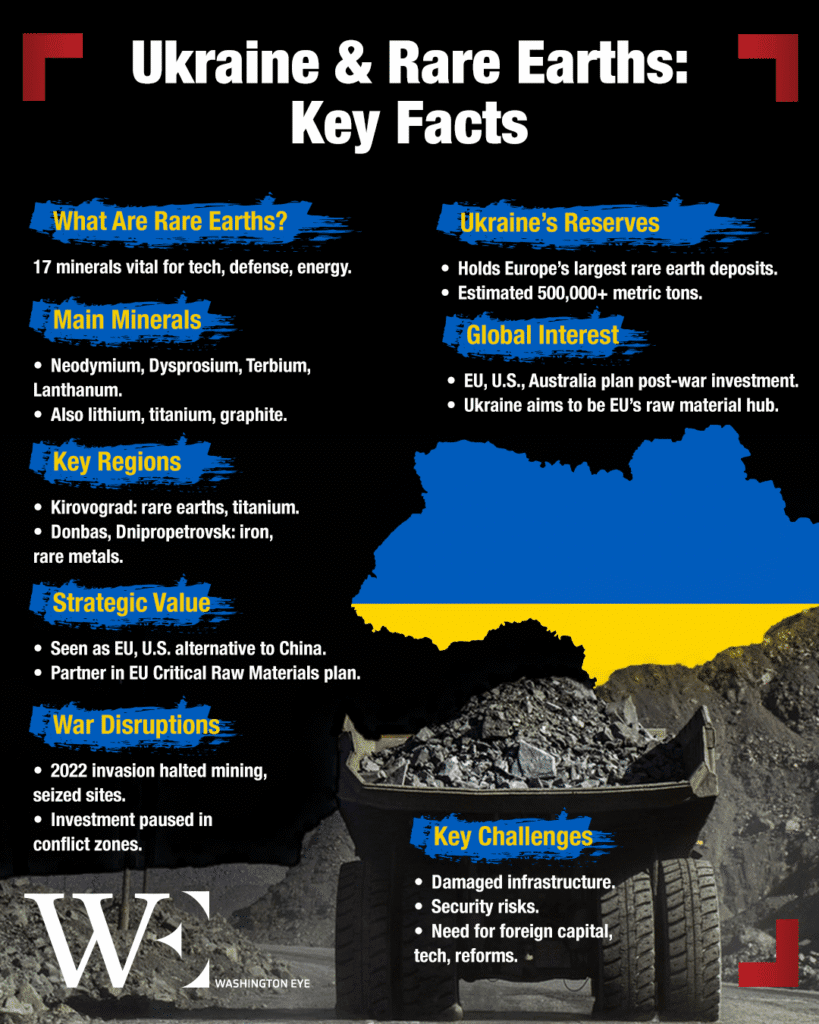Ukraine and the United States have formalized a strategic resource agreement that positions critical minerals at the heart of postwar reconstruction and global supply chain realignment. This pact, centered on a jointly managed Reconstruction Investment Fund, aims to bolster Ukraine’s defense and reconstruction efforts while reducing U.S. dependence on adversarial sources for essential minerals. The deal’s nuances and broader implications warrant a closer examination.
A Shift from Debt to Partnership
Initial proposals from the Trump administration demanded Ukraine allocate up to $500 billion worth of mineral revenues to the U.S. as repayment for wartime aid, a condition Kyiv firmly rejected. The finalized agreement marks a significant departure from this stance. Instead of framing mineral access as debt repayment, the deal establishes a 50/50 profit-sharing model through a Reconstruction Investment Fund, preserving Ukraine’s ownership and control over its resources.
This framework not only respects Ukraine’s sovereignty but also aligns with European Union accession laws, which prohibit foreign ownership of state assets. By avoiding debt obligations, the agreement positions itself as a collaborative effort rather than a transactional exchange.
Strategic Resources and Economic Potential
Ukraine’s mineral wealth is substantial, encompassing 22 of the 34 minerals identified by the European Union as critical, including lithium, titanium, graphite, and rare earth elements. These resources are vital for various industries, from renewable energy to defense.
However, challenges persist. A significant portion of these mineral deposits lies in regions currently under Russian occupation, complicating extraction efforts. Additionally, outdated geological data and regulatory hurdles may deter immediate investment. Despite these obstacles, the deal signals a commitment to unlocking Ukraine’s economic potential and integrating it into global supply chains.
Geopolitical Ramifications
The agreement carries profound geopolitical implications. For Ukraine, it represents a strategic alignment with the U.S., potentially deterring further Russian aggression and reinforcing its aspirations for Euro-Atlantic integration. While the deal does not provide explicit security guarantees, the economic entanglement with the U.S. may serve as a de facto assurance of continued support.
From the U.S. perspective, the pact offers a means to secure critical minerals essential for national security and technological advancement, reducing reliance on adversarial suppliers like China. Moreover, it positions the U.S. as a key player in Ukraine’s post-war reconstruction, potentially expanding American influence in Eastern Europe.
Domestic and International Reactions
The deal has elicited varied reactions. In Ukraine, there is cautious optimism, with officials viewing the agreement as a diplomatic success that safeguards national interests while securing vital support. Conversely, Russia has criticized the pact, perceiving it as a threat to its regional ambitions and influence.
In the U.S., the agreement has been portrayed as a strategic victory, aligning economic interests with foreign policy objectives. However, some analysts caution that the success of the deal hinges on sustained political will and the resolution of ongoing conflicts in Ukraine.
A Final Note
The U.S.-Ukraine minerals deal represents a strategic convergence of interests, but it is unfolding against the backdrop of an unpredictable U.S. foreign policy landscape. Under the renewed Trump administration, Washington’s commitments abroad have proven variable, raising questions in Kyiv and among U.S. allies about the durability of American support.
While the agreement offers Ukraine an economic foothold in postwar recovery and grants the U.S. access to critical resources, its long-term significance will depend less on the deal’s structure than on the consistency of its political backing. In this sense, the pact is not a fixed turning point but a reflection of a moment—shaped as much by urgency as by uncertainty.
















